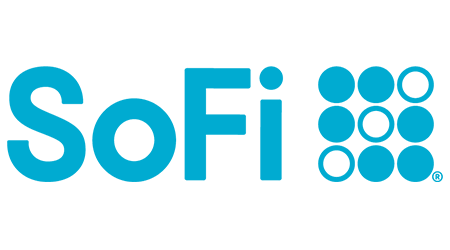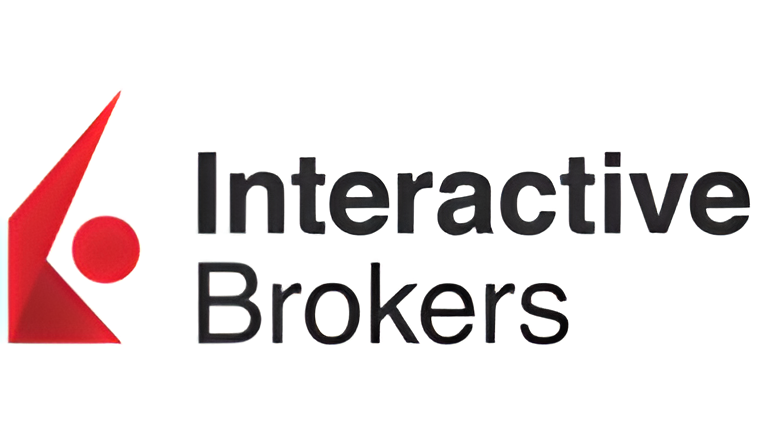-
Commitment to our readers
18 years
Helping you save money
Reviewed
by experts
Cited by
major publications
Finder maintains full editorial independence to ensure for our readers a fair assessment of the products, brands, and services we write about. That independence helps us maintain our reader's trust, which is what keeps you coming back to our site. We uphold a rigorous editorial process that ensures what we write and publish is fair, accurate, and trustworthy — and not influenced by how we make money.
We're committed to empowering our readers to make sound and often unfamiliar financial decisions.
We break down and digest information information about a topic, product, brand or service to help our readers find what they're looking for — whether that's saving money, getting better rewards or simply learning something new — and cover any questions you might not have even thought of yet. We do this by leading with empathy, leaning on plain and conversational language that speaks directly, without speaking down.
Read on to learn more about traditional IRAs, how they work and how to open one of these retirement accounts.
Key points
- Traditional IRA contributions can lower your taxable income.
- Qualified distributions are taxed based on your income tax bracket in retirement.
- Non-qualified withdrawals are subject to regular taxes plus a 10% penalty.
What is a traditional IRA?
A traditional IRA is a type of IRA that lets you delay taxes on money you save for retirement. Your contributions and any earnings you make on your investments over time are tax-deferred, meaning you don’t pay taxes on this money until you begin taking withdrawals in retirement. Since taxes are delayed, traditional IRAs may be ideal if you think you’ll be in a lower-income tax bracket at retirement.
The traditional IRA also offers retirement savers an upfront tax benefit in the form of a tax deduction. Traditional IRA contributions are tax-deductible in the year in which the contributions are made. So if you contribute $3,000 to a traditional IRA in 2024, you may be able to deduct $3,000 from your taxes when you file in 2025. Allowable deductions vary depending on your income and whether you contribute to a retirement plan at work.
How does a traditional IRA work?
A traditional IRA operates as a tax-advantaged investment account, offering tax benefits as you invest in assets such as stocks, bonds, exchange-traded funds (ETFs) and mutual funds. Banks, brokerage firms and other financial institutions approved by the Internal Revenue Service (IRS) to custody IRA assets can offer traditional IRAs, and anyone with earned income can open and fund one of these accounts.
Contributions to a traditional IRA may be tax-deductible in the year in which you contribute. The amount you can deduct varies depending on your modified adjusted gross income (MAGI) and whether you’re covered by a retirement plan at work.
The IRS sets the IRA contribution limits each year. IRA contribution limits are subject to an annual cost-of-living (COLA) adjustment. In 2025, you can contribute up to $7,000 to an IRA. Contributions over the limit set by the IRS are considered excess contributions and can result in a 6% yearly tax on the excess amounts left in your account. You have up until the due date of your tax return to withdraw excess contributions.
Come retirement, traditional IRA withdrawals are subject to ordinary income tax. Withdrawals before the age of 59 and a half are subject to both income taxes and a 10% early-withdrawal penalty.
Traditional IRA eligibility
Anyone with earned income can open and contribute to a traditional IRA. There are no age or income limits.
However, the IRS does limit the amount of your IRA contributions that you can deduct each year depending on whether you’re covered by a retirement plan at work.
If you’re covered by a workplace retirement plan:
- Are single or head of household and your MAGI is $77,000 or less, you can deduct the full amount of your traditional IRA contribution. You’re allowed a partial deduction if your income is more than $77,000 and no deduction once your income exceeds $87,000.
- Are married filing jointly and your MAGI is $123,000 or less, you can deduct the full amount of your traditional IRA contribution. You’re allowed a partial deduction if your income is more than $123,000 and no deduction once your MAGI exceeds $143,000.
If you’re not covered by a workplace retirement plan, you can deduct the full amount of your contribution regardless of your MAGI. Married couples filing jointly can claim the full deduction so long as neither spouse is covered by a retirement plan at work.
Traditional IRA contributions — how much can you deposit?
Anyone with earned income can contribute up to $7,000 ($8,000 if age 50 or older) in an IRA in 2025. If less, your taxable income for the year. The $7,000 limit is the total you can contribute to all your traditional or Roth IRAs.
Traditional IRA taxes
You fund your traditional IRA with pre-tax dollars, and contributions to the account may be tax-deductible. Meanwhile, earnings in the account — things like investment gains, interest or dividends — grow tax-deferred. This means that your retirement savings accumulate tax-free until you withdraw money from the account.
Non-qualified distributions — distributions before the age of 59 and a half — incur a 10% early-withdrawal penalty on top of the normal tax you’d have to pay for withdrawing funds from the account.
How to open a traditional IRA
- Choose a traditional IRA custodian. Explore and compare IRA custodians, considering things like investment options, fees, customer support and platform functionality.
- Complete your application. Most IRA custodians offer simple online application processes. Be prepared to supply personal information, such as your name, date of birth and Social Security number.
- Fund your account. Fund your traditional IRA with a check or bank transfer. If you have an existing retirement account, you may be able to roll over those funds into your new IRA.
- Select your investments. Choose from stocks, bonds, ETFs or any other assets available with your IRA custodian.

- 1% match on IRA contributions and 401(k) rollovers
- $0 annual fee and no options contract fees
- Robo-advisor and financial planning sessions
- Access private credit, venture capital and other alternative asset funds

- Choose from a variety of self-directed retirement account options
- Invest in alternative assets like real estate, crypto, private businesses and more
- Take advantage of tax benefits to grow your retirement savings

- $0 commissions on stocks, ETFs and options
- Trade stocks, bonds, ETFs, mutual funds, options, futures & currencies in your IRA
- Beginner-friendly and advanced mobile trading platforms, with robust research tools
Traditional IRA investment options
Except for life insurance and collectibles, federal law permits most types of investments in a traditional IRA. Allowable investments include:
- Stocks
- Bonds
- Exchange-traded funds (ETFs)
- Mutual funds
- Certificates of deposit (CDs)
- Cash
- Cryptocurrency
- Real estate
- Other alternative assets
Though most assets are permissible in an IRA, each IRA custodian determines which investments are made available to customers. Most major banks and brokers limit IRA investment options to traditional assets such as stocks, bonds, mutual funds and ETFs. In some cases, options and futures. To diversify your IRA with alternative investments like crypto, real estate and gold, find a custodian that offers self-directed IRAs.
Traditional IRA rules you need to know
From allowable investments to mandatory distributions, traditional IRAs have some rules you should know.
You have until April to contribute to an IRA for the previous year. Fund an IRA any time between January 1 and the tax-filing deadline of the following year. For tax year 2024, you have until April 2025 to contribute to an IRA. Mandatory withdrawals beginning at age 73, meaning you must start taking distributions from your traditional IRA the year you turn 73 years old.
Withdrawals before age 59 and a half can be penalized. Unless you qualify for an exception, you’ll have to pay a 10% penalty if you withdraw money from your traditional IRA before you’re 59 and a half. Using funds for a first-time home purchase or for certain qualified higher education or medical expenses are examples of exceptions.
Lastly, the law prohibits investing IRA funds in life insurance and collectibles. Most assets are allowed in an IRA, but life insurance and collectibles are off the table. Examples of collectibles include artwork, antiques and wine.
IRAs at a glance
| Traditional | Roth | SEP (Simplified Employee Pension) | SIMPLE (Savings Incentive Match Plan for Employees) | Self-directed | |
|---|---|---|---|---|---|
| Who it’s for | You want to deduct your contribution You think you’ll be in a lower-income tax bracket in retirement | You’re under the income limit threshold You think you’ll be in a higher income tax bracket in retirement | Business owners with or without employees who want tax-deductible contributions | Small business owners not currently sponsoring a retirement plan | You want to invest in both traditional and alternative assets |
| Max contribution per year | $7,000 ($8,000 if you’re age 50 or older) | $7,000 ($8,000 if you’re age 50 or older) | Business owners can contribute up to the lesser of $70,000 or 25% of an employee’s salary | Employees can contribute up to $16,500 from their salary (up to $20,00 if they’re age 50 or older) Employers are required to match each employee’s elective-deferral contributions, dollar-for-dollar, up to 3% of the employee’s compensation | Contribution limits depend on whether the IRA functions as a traditional, Roth or SEP IRA |
| Are contributions tax-deductible? | Yes, but your eligibility and the amount you can deduct depends on your tax filing status, MAGI and whether you have a workplace retirement plan | No | Yes, employers can deduct the lesser of their contributions or 25% of the employee’s compensation | Not for employees Business owners can deduct all contributions made to an employee’s SIMPLE IRA Sole proprietors can deduct their own salary reduction contributions and their own matching or nonelective contributions | The same tax deduction rules for standard traditional, Roth, SEP and SIMPLE IRAs apply |
Can I have an IRA and a 401(k)?
Yes, you can have an IRA and a 401(k) and many people do. You can contribute up to each account’s maximum contribution limit each year, though 401(k) contributions can limit how much you can deduct from your traditional IRA.
Here are some reasons why you should have an IRA and a 401(k):
- IRAs allow most asset types, while 401(k)s are mostly limited to mutual funds.
- Many 401(K)s come with an employer match, which is essentially free money. Except for Robinhood’s 1% IRA match, most IRAs don’t offer matching contributions.
- You want variety in how your retirement savings are taxed. If you have a traditional 401(k) through work, you may decide to open a Roth IRA to get tax-free withdrawals in retirement.
Benefits and drawbacks of traditional IRAs – are they worth it?
Pros
- Easy to set up
- No income limit to open and contribute
- Tax deductions give you a tax break today
- Wide range of allowable investments
- Certain exceptions let you avoid the 10% early-withdrawal penalty
Cons
- Relatively low contribution limits
- Tax deductibility limited if you’re covered by a workplace retirement plan
- Required minimum distributions
- A 10% penalty typically applies for non-qualified distributions
A third of Americans have an IRA
Do you have an IRA?
Response | % of Americans |
|---|---|
| I do not have this, but plan on getting it in the next 6 months | 13% |
| I do not have this nor plan on getting it | 56% |
| I currently have this | 31% |
Bottom line
A traditional IRA is a type of tax-advantaged investment account that offers financial incentives for saving for retirement. These include deductible contributions and the ability to defer paying taxes on your investments until you reach retirement, making it a good option if you expect to be in a lower income tax bracket in retirement. Find the best IRA for your investing goals.
Compare providers to kickstart your retirement investing
Find the best retirement account for your unique savings goals.
Frequently asked questions
Ask a question
More guides on Finder
-
Top IRA Match Accounts for 2025: Boost Your Retirement Today
Get up to a 3% IRA match with Robinhood and Acorns or up to a 1% IRA match with SoFi. See how to qualify here.
-
5 Best SEP IRA Providers of 2025
Explore the pros and cons of the best SEP IRAs and learn how to open one of these accounts.
-
7 Best Rollover IRA Accounts of 2025
Explore the advantages and shortcomings of the best rollover IRAs for beginners, mobile trading, advanced traders and more.
-
Best retirement plans of 2025
Review the best retirement plans in 2025, from employer-offered to individually opened to retirement plans for small business owners.
-
403(b) vs. Roth IRA: How do they compare?
Compare the key differences in contribution limits, tax advantages and investment options between 403(b)s and Roth IRAs.
-
7 types of IRAs: Which is right for you?
Learn about the different types of IRAs and which is right for you.
-
2025’s Top 10 Roth IRAs: Best Picks to Build Your Retirement Savings
Check out our picks of the best Roth IRA accounts for beginners, options traders, hands-off investors and more.
-
10 Best IRA Accounts for 2025: Top Retirement Picks
Check out our picks of the best IRA accounts for beginners, options traders, hands-off investors and more.
-
How to start a solo 401(k)
A retirement plan for self-employed individuals but may come with high administrative fees.
-
Goldco Review 2025: Pros and Cons
Pros and cons to consider before you sign up for a Goldco precious metals IRA.


